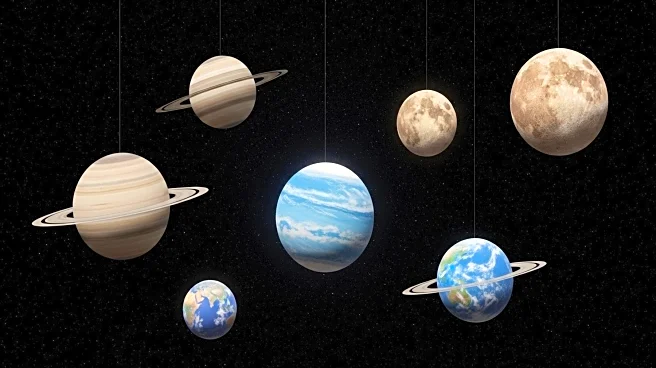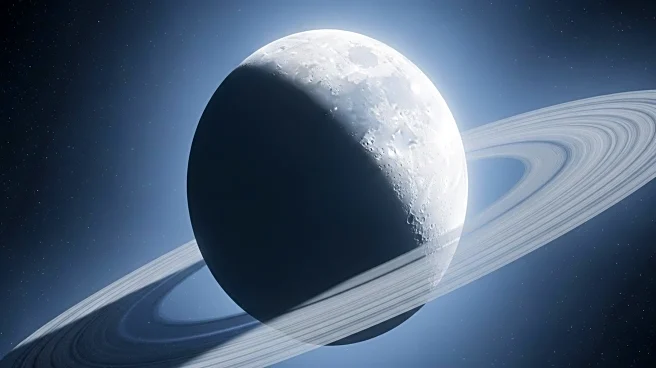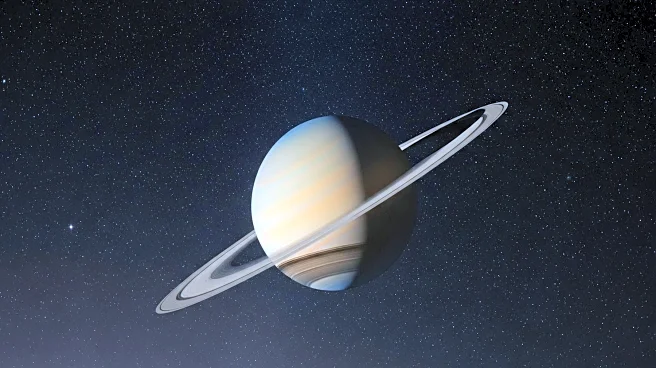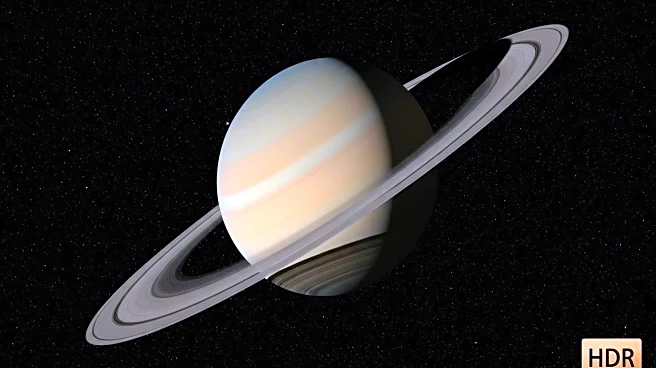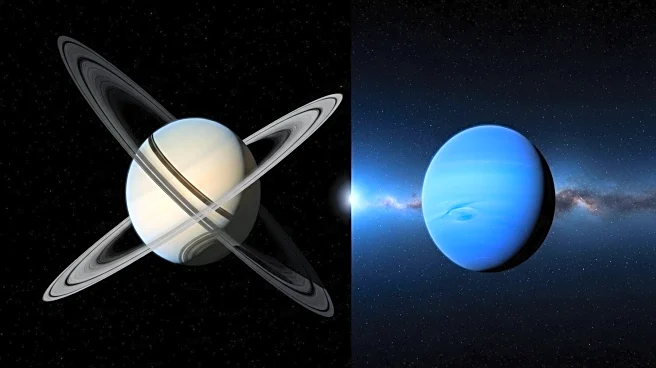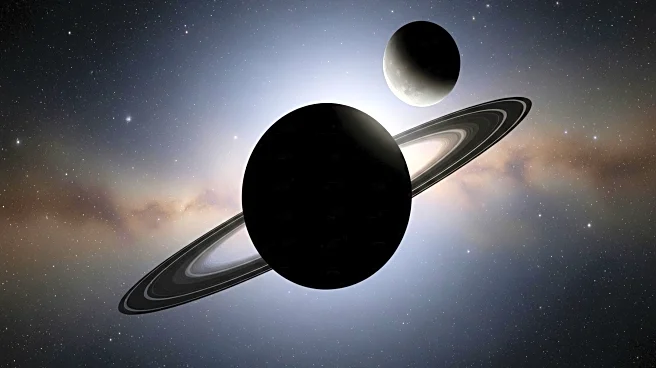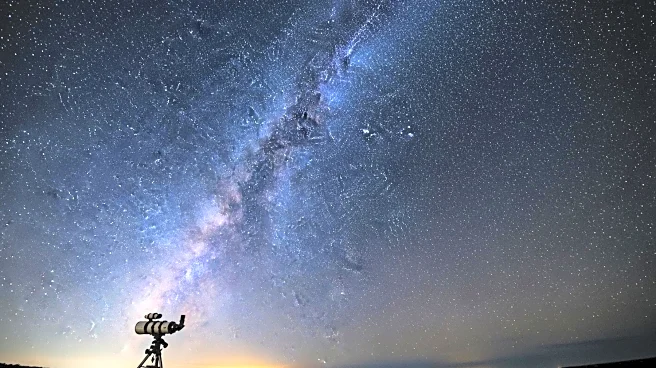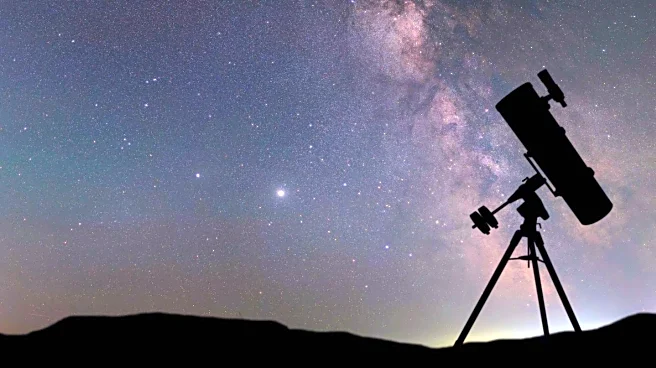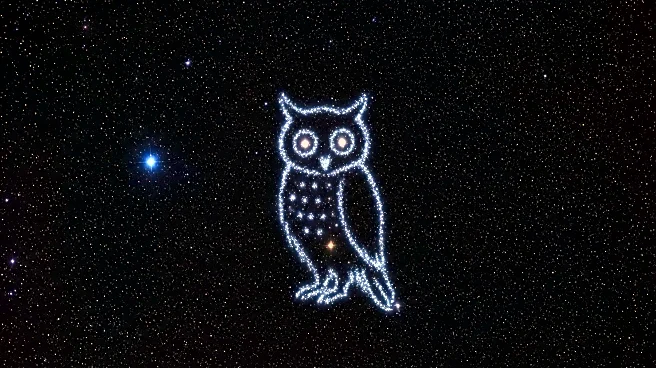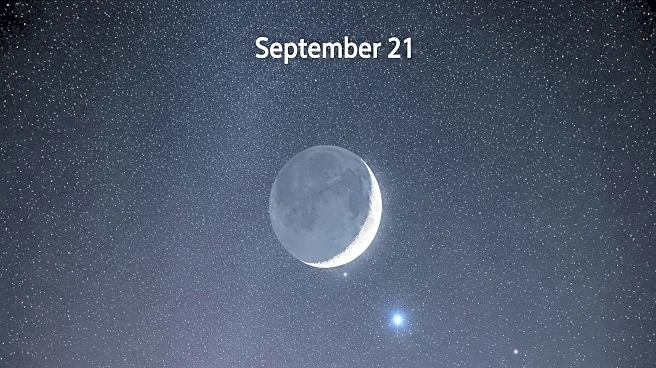What's Happening?
Saturn will be at its brightest this weekend as it reaches its annual opposition, aligning with Earth and the Sun. This celestial event allows the planet to be fully illuminated by sunlight, making it visible to the naked eye. Stargazers can expect optimal viewing conditions, with Saturn rising in the eastern sky at sunset and remaining visible throughout the night. The new moon phase will minimize light interference, enhancing the viewing experience.
Why It's Important?
This astronomical event offers a unique opportunity for both amateur and professional astronomers to observe Saturn's features, including its iconic rings and moons. Such events can inspire interest in astronomy and science education, encouraging public engagement with space exploration. The visibility of Saturn also serves as a reminder of the vastness of the solar system and the ongoing efforts to understand our cosmic neighborhood. It highlights the importance of preserving dark skies for astronomical observations.
What's Next?
Following its opposition, Saturn will remain visible for several weeks, though its brightness will gradually diminish. Other planets, such as Neptune and Uranus, will also reach opposition later this year, providing additional opportunities for stargazing. These events may prompt educational institutions and observatories to organize viewing sessions, fostering community interest in astronomy.

